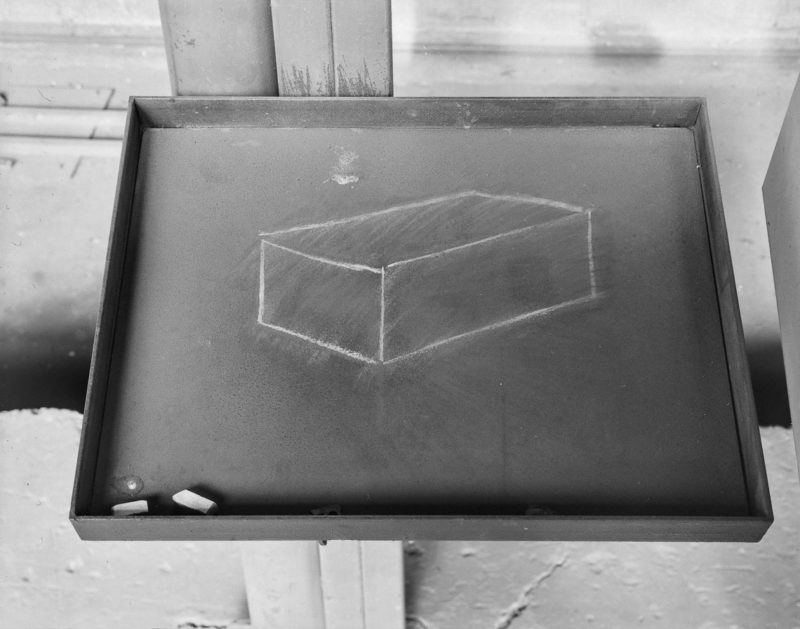Gábor Arion Kudász is one of the 2016 Conscientious Portfolio Competition winners. Juror Felix Hoffmann wrote the following about the submitted project, Human: “The series contains different aspects of thinking. There is a documentary approach to a site where people are working with clay. There is a surrealistic approach, a reflection of the material and physicality of the objects. And there is a scientific interaction in these pictures where the viewer doesn’t know any longer why they might have been taken. The project is an interesting mixture of different directions in photography, involving us as viewers.” Kudász’s work had been on my radar for a while (I own several of his books). I also had the chance to meet and talk in person roughly two years ago in Budapest, where I saw an early version of Human. The following conversation was conducted via email.
Jörg Colberg: Can you speak a bit about your background as a photographer?
Gábor Arion Kudász: I come from a family of artists, both of my parents were painters and in my childhood it seemed natural to grow up to be one too myself. Knowing the difficulties of existence as an artist, my parents encouraged me to choose a proper profession instead. As it happens, in high school I met a lovely young photography teacher and an open platform for intelligent discussion at the photo study group. Sometimes me and my friends skipped classes just to be there and talk in the darkroom. I remember one special thing that would be impossible today: we used to smoke in the darkroom blowing the smoke into the filter of the air exchanger. The orange light became bright with each sip and mythical outlines emerged from nothing. The flexibility of that environment was a decisive step towards becoming a photographer. In the last year of high school my parents sent me to study in the US, and in school there was a fully equipped color lab that nobody except me wanted to use. When I came home I left one of my favourite negatives in the enlarger, I wonder if it’s still there. But in retrospect there were many more subtle influences causing a continuous drift towards photography.
I studied at the Hungarian University of Art and Design (the predecessor of MOME). Hardly finished my studies when I was put in charge of maintaining the photo department computer room, simultaneously I was assisting an advertising photographer. It was an exciting and exhausting time of my life, had to juggle my part-time at the university, to meet demanding commercial jobs and also to find time for my own work. It was then when I only found time for my art project at night, so I was working around the clock. It was fifteen years ago and I’m still teaching at the same place.



JC: Can you give us an idea of the program you’re teaching in, its scope, maybe some of its students and activities?
GAK: Did you know that the idea of Rubik’s cube emerged from a school studium? It was originally a design for a teaching tool, so the sides were colored to better display how the planes can be rotated in three dimensions, then it became the toy and then the visual icon for creativity. (he invented his cube while teaching at MOME.)
When our university changed its name to commemorate the legacy of László Moholy-Nagy we wanted to commit ourselves in education principles to the wide horizon represented by him. The former and current rectors, Gábor Kopek and József Fülöp succeeded to bring out MOME from the isolated position of a small eastern european art school. We’ll celebrate the 33rd anniversary of the photography department next year, so I spent the last couple weeks digging through the archives which pretty much covers contemporary Hungarian photography, just to mention a few names Ágnes Eperjesi, Miklós Gulyás, Imre Drégely, Anna Fabricius, Peter Puklus, Sári Ember, Andrea Gáldi-Vinkó, Viola Fátyol, Éva Szombat, Ildi Hermann.
The photography master program is open to socially committed young artists who want to speak of the challenges in our society. A couple years ago we started a series of workshops, field trips and exhibitions dealing with the effects segregation and the long history of migrations. Experts from different disciplines like sociology, future studies, anthropology, urbanism assist us to use the medium of photography to better understand what is going on around us. In recent years it may have appeared to some that migration is a brand new challenge, but it is one to the most common processes in European societies. There are centuries of experience in all our cultures to learn from. Most of our traditions and precious minorities we struggle to preserve are the result of segregation and coexistence of communities, while in the eastern block we experienced a uniform ideology, sort of a destructive integration. It is vital for photography as an art to address sensitive topics and for artists to take a stand.
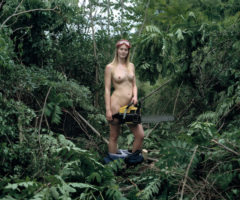

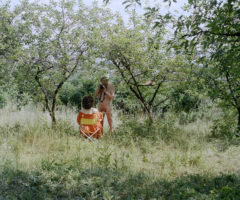
JC: Why do you think it’s important to do that? Maybe I’m mistaken, but to me it seems the world of art photography has more and more moved into the opposite direction, into art making while avoiding sensitive topics and especially taking a stand.
GAK: Art and sensitive topics are not mutually exclusive. We can’t be surprised if policymakers become indifferent towards the arts when artists become indifferent towards the problems of society. During the 90’s it was a popular slogan in Hungarian politics that art has to become apolitical. Probably what they (some politicians) meant by this was that politics (their opponents) should not interfere with arts (and its power to influence). Of course this is absolute nonsense, because art was always political, even when many artists rejected politics, which is also a statement. The fear to enter into a discussion leads to castration. The same stands for science, sport, culture, and so on. And here I don’t make any difference between photography and the other forms of art, except for photography is a very accessible art form.
The concept of an artist being the consciousness of society is appealing to me. I’m not sure whether my work succeeds in addressing important questions, but my intention is to do so. It’s hard to imagine an artist without a mission, without the demand for change. The work gets its energy from public debate or the confrontation around it. The most accurate measure of quality is honesty, the condensation of truth. But it’s confusing young people to see the amount of reference, wittiness, intellectual fortresses and objects camouflaged as art. Why would you make any kind of art if you don’t have something important to express, something you desperately want others to understand, something that can’t remain untold? The work and the person who makes it stand in a parental relationship and that doesn’t work with a smoke-screen opinion. ‘Art making’ sounds like something that can be done on a production line, but definitely something disconnected from the real motivation to make art. We are constantly dealing with obscure concepts as if the elongation of an intellectual hide-and-seek was the goal itself, but serious problems can’t be avoided without serious consequences.




JC: Coming to your work, Human strikes me as a bit of a deviation from your earlier, more “straight” work. How did you come up with the basic idea, and how did you pursue photographing the project?
GAK: Predictability is a tremendously dangerous mistake an artist can make. Human is definitely more playful than my earlier work, but I wouldn’t call it a deviation. There is the same worldview behind it as my earlier projects. Actually my previous work, Memorabilia had a much bigger impact on me and the way I use of photography. The foretold death of my mother was a powerful reason to let go of almost everything that characterized my work. In the following four years I tried to answer how does a person dissolve into memories, and it needed radically different ways to make use of the photograph. Pleasing images were deceiving and my ambitions were overshadowing her personality, but the objects could speak for themselves, I only had to step back and allow them to be heard. My earlier work is often seen as documentary; probably this is what you mean by “straight”. But the circle of problems, the thinking and attention have not changed since the beginning. I’m not obsessed with developing a signature visual style which in return would restrain my spectrum of inspirations and experimenting spirit. I want to learn from my own practice.
The inspiration for Human, or more precisely the subject of examination came from a commission that reached me a couple days after Memorabilia was published and I was there without anything left to do. Wienerberger, a global brick producer commissions artists (Gregor Sailer, Charles Fréger, Hubert Blanz, Friederike von Rauch, Martin Kollar, Janne Lehtinen and this year Peter Puklus and Andrew Phelps) to produce art work related to their business as the company decided to build a collection. I did some research, because I was trying to find an excuse to turn down the job. But instead of an excuse I realized that this simple object, the brick, was the perfect symbol I was searching for for years. It was a lucky accident. To give a little background, for almost a decade following my graduation I was immersed into how urbanization and globalization works on the local level. My doctorate research focused on the visual traces of the global-local phenomenon. In the thesis project I investigated how the visual appearance of a landfill, or more precisely the experience of seeing the chaos and entropy of a landfill changes the way we perceive our world, and that this change can be detected in the use of space in contemporary urban planning. The new aesthetic of a polluted environment alters how we accept the world, and that gives a strong feedback into the system. My thoughts circulated around the role of pollution, competing standards, the invasion of technology and the idea that evolution is stepping over us. It is a strong feeling that pollution and a maturing technology are just as legitimate actors of life as meteors and dinosaurs.
I’ll try to sum it up before it gets too long: the core of Human was the analogy between the brick as an object, which is basically a unit of gravity, as opposed to the moral weight one can carry, which also comes in rations. Some of us can take more some of us can handle less. Jacob Bronowski argues in his book The Ascent of Man (which is a wonderfully humane overview of the history of science) that at the cradle of our civilization the simultaneous invention of the brick and formal mathematics can’t be just a coincidence. He points out that the coming to existence of uniform building blocks marked a shift in the understanding of the physical and mental world. For me this was elemental reinforcement, because I think our civilization is a tool of metamorphosis from the epoch of biological into the epoch technological evolution. As life is literally banging its head against an invisible wall, each time the skull brakes until with our help the transition into a different structure becomes possible.
On the morning of my first visit to a brick factory as I was still at home preparing my equipment, in the factory a worker was crushed to death by a pallet of bricks. I couldn’t help the feeling of guilt and responsibility sneak up on my back.

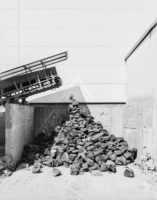

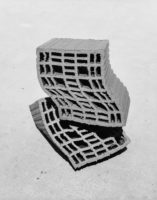
JC: Human mixes a variety of photographic approaches. Can you speak of your thinking behind this?
GAK: I never hesitated to alter my images or to interfere with my subjects when I believed there’s a better chance to uncover what I was searching for. Manipulation is a tool in the search of truth, and this is by far not a contradiction. The Hungarian poet Attila József sums it up so well. I better rely on his words, unfortunately far less brilliant in the English translation by Watkins Vernon: “You know this well: the poet never lies. The real is not enough; through its disguise, Tell us the truth which fills the mind with light”. A line cannot be drawn between documentary and staged photography, although many (like World Press Photo jurors) struggle to define it. But it is razor sharp between the photographer’s intention to tell the truth or to tell a lie.
Human builds on a vast heartland of images under the surface. These collected pictures often come from the early 20th century when a naively optimistic view of technology was more prevalent. During the first visits to the plants it became obvious that brick production is one of the most automatized processes today, although the clay it uses hardly changed in the last ten thousand years. I decided to concentrate only on the factory environment, and that I will draw the visual horizon of this work as narrow as possible, while at the same time I was attempting to bring into play as diverse feelings and associations as possible, to address everything (culture, history, science) by seemingly talking about only one thing.
It was stunning how little the workers thought of their profession, so they became the mediums of several semi-serious experiments we started to call “responsibility practices”. I was curious to involve them in the search of my definition of the human scale. A determinative part of the images resulted from these practices. Combination, transformation (transfiguration) and repetition were used in a rather rigid system where the brick represented the intersection between the human and technology. For me working with photographs is always a learning process, and ideas formulate alongside the series itself. Photographs are not necessarily the result of a distilled thought, but rather a catalyst, a crutch to help me think.
Evidence (by Sultan and Mandel) had a great influence on me. I knew of the existence of this book, but it revealed its secret to me not so long ago. Contrary to the general interpretation I think it is less about the discovery of a new aesthetic in photography than about how segmented our culture structures had become. The distance between different fields of science is now greater than between people a century apart. Its enigma is in the graceful way of showing how little we are able to understand our own world, and this has little to do with photography. They made this book in the year I was born and things got far more out of hand since then.
I reached the point where Human is ready to be published. But there are so many photobooks out there, one might have the impression that all work ends up encapsulated in a book, and it’s a bit numbing. So I decided to wait for an offer to knock on my door.
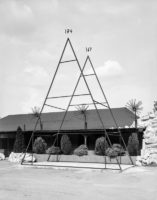
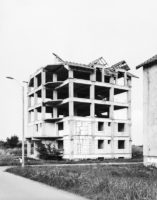
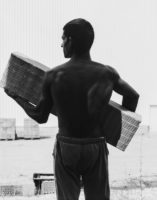
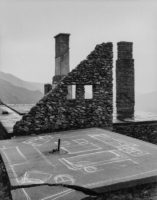
JC: The photobook has played an important role in your practice. Why books? What do books offer for you?
GAK: In my childhood I was surrounded by an almost inexhaustible library of art books and old illustrated albums, so the form infiltrated into my own practice quite naturally. I can remember paging through Grünewald and decades of National Geographic magazines instead of children’s books. I found it fascinating how all the world can be summed up in such compact and accessible units.
The photograph is a possibility of multiple interpretations. It’s not the exhibited object, not the screen of a computer and not a page in a book, but it can be any of them. It’s very important to make the distinction between the book and the exhibition. If the exhibition piece is like a body part cut out from the entire work, comparable to an autopsy, then the book is more like the genetic code of the work, a carrier to multiply the idea instead of dissection of the form. Books also open another possible path the work could have taken. In this sense the making of a book is the link between the finished work and a new idea, a new project emerging on the horizon. I never make work to be a photobook, that just wouldn’t be interesting enough. But I find it fascinating how a circle of thought works out its shape in the book format.
Books that only look good if they’re immaculate don’t really make sense to me. It’s the feeling of being cheated when I need to pull on gloves to page through a book. Instead I prefer the idea of the book as a living organism that has a life cycle, aging and memories, a life which disintegrates in the long run. The books I own have scars, crooked covers, dog-eared corners, fingerprints and other markings, and most of the marks come from previous owners. This all adds layers to their content, while the sterile object is at most an idol, incapable of breeding new ideas.
Recently I was asked to send replacement copies of my Memorabilia book to the bookshop of Le Bal, because the copies I originally gave them had a few marks of wear on them. Ironically, this book is an inventory of the objects my mother owned and touched, it’s all about marks that remind you of a life lost. It was designed in a way to absorb information from its environment. It has a slightly light sensitive cover, thin pages that are larger that the cover so the outer pages get worn easily and there are some additional treasure pieces hidden inside the book. The copies asked to be replaced I carried around for a couple days, I hand folded a poster into them, added secret marks into them and signed them. The books I make often reflect this attitude. My books are never ready, they first have to be used, completed and contributed to. There are so many identical copies. How do you make any copy you own the one and only book?
Last night I read from a collection of Bechstein tales to my son (what horrors a child has to endure!). When I was his age it used to be my book and I tore out some half pages, which my mother cautiously glued back in, but a part here and there went missing. I have to fill in gaps every other evening, as if they weren’t there. As if absence wasn’t real.
